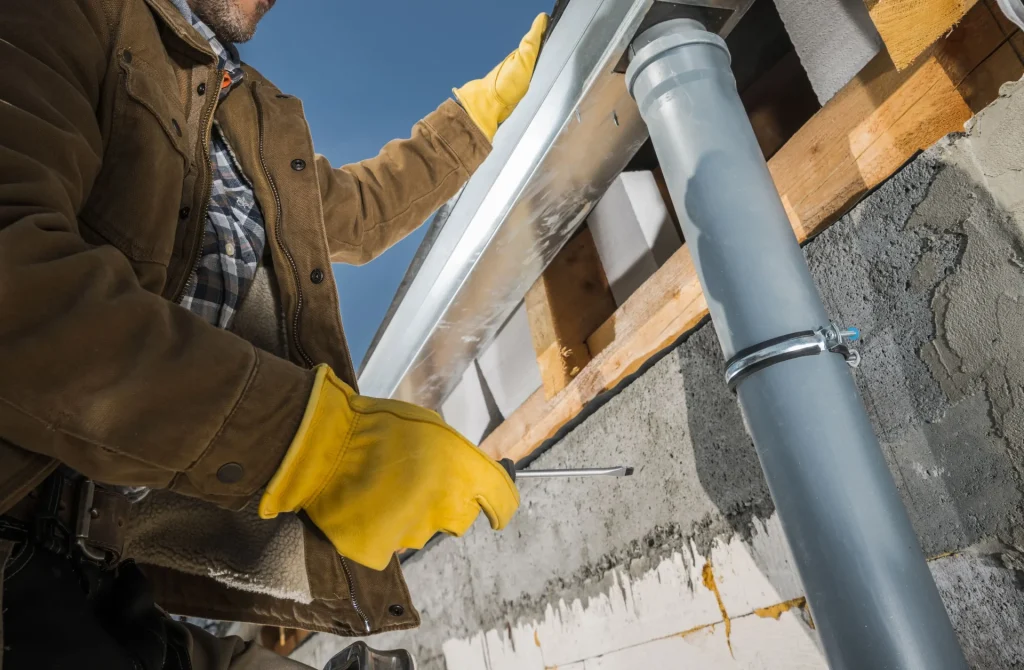How to Maintain Your Home’s Roof Drainage in Extreme Weather
When heavy storms roll through, your roof is the first line of defense. But here’s the thing—your roof can’t do its job alone. It needs a working drainage system to carry water away safely. Without it, rainwater can back up, overflow, and cause all kinds of expensive problems. That’s why roof drainage maintenance isn’t just some chore you put off—it’s one of the smartest things you can do to protect your home, especially in extreme weather.
So let’s break it down. Here’s what you need to know about keeping your roof drainage in top shape when the weather gets wild.

Why Roof Drainage Matters More in Extreme Weather
During a light shower, even a so-so system might hold up okay. But in a Texas-size downpour or a winter ice storm? That’s when weak spots get exposed.
Without proper drainage:
- Water can pool around your foundation.
- Gutters overflow and damage siding.
- Leaks creep into your attic or walls.
- Soil erosion weakens your yard’s grading.
It’s a chain reaction that often ends with costly foundation or structural repairs. That’s why homeowners who stay ahead of roof drainage maintenance usually save a ton in the long run.
For a deeper look at fixing drainage issues, you can also check out this professional service guide.
Step 1: Keep Gutters Clean and Clear
Yeah, I know—no one loves climbing a ladder to scoop leaves and muck. But clogged gutters are the number one cause of drainage failure.
Here’s what you should do:
- Clean at least twice a year. Once in spring and again in fall.
- After major storms, do a quick check. Wind can blow in branches and debris overnight.
- Install gutter guards if trees hang over your roof. They won’t make gutters maintenance-free, but they help.
When gutters clog, water spills over the edge, runs down your walls, and pools near the foundation. Not good. Regular cleaning is cheap insurance.
Step 2: Inspect Downspouts and Extensions
Even if your gutters are clear, it won’t matter if the downspouts are blocked. Check that water flows freely and doesn’t back up.
Also, look at where the downspouts empty. If water is dumping right at the base of your house, you need extensions. Ideally, water should be carried 5–10 feet away. In extreme weather, that extra distance makes all the difference.
Step 3: Watch for Sagging or Damaged Gutters
If your gutters are sagging, cracked, or pulling away from the roof, they can’t handle heavy rain. This often happens after years of wear or from the weight of ice and debris.
Sagging is more than just an eyesore—it changes the slope, meaning water doesn’t drain right. A little repair now keeps you from a full replacement later.
Step 4: Check for Water Pooling
After a big storm, walk your property. Do you see standing water around the foundation? That’s a clear sign something’s off with the drainage.
Water pooling means your system isn’t carrying water far enough away. Sometimes, you need grading work in the yard. Other times, you need a full roof drainage maintenance upgrade with underground drains tied in.
Step 5: Prepare for Seasonal Extremes
Every season brings its own challenges:
- Summer storms: Heavy rainfall demands clean, well-sized gutters.
- Fall leaves: More frequent cleanings keep clogs at bay.
- Winter ice: Ice dams form when drainage isn’t working, leading to roof leaks.
- Spring storms: Hail and wind can knock gutters loose—always inspect after.
A little prep each season makes it easier to keep up year-round.
Step 6: Know When to Call the Pros
Some things, like cleaning gutters, you can DIY. But if you notice recurring overflow, sagging, or water near the foundation, it’s best to call in experts.
Companies that specialize in drainage system repair can inspect the entire setup—gutters, downspouts, grading, and underground drains—to figure out where the weak spot really is.
Common Mistakes Homeowners Make
Let’s be real: most water damage isn’t because people don’t care. It’s because of simple mistakes. Here are a few to avoid:
- Waiting too long between cleanings. Twice a year minimum, more if you’ve got trees overhead.
- Using undersized gutters. If your roof’s large, standard gutters might not cut it.
- Ignoring small leaks. A tiny drip now can become a major headache later.
- Not extending downspouts. Letting water dump at the base of your home is like asking for foundation problems.
Roof Drainage Maintenance Checklist
If you only take one thing from this post, let it be this quick checklist:
- Clean gutters in spring and fall.
- Check downspouts for blockages.
- Extend water 5–10 feet away from your foundation.
- Inspect after big storms for damage.
- Repair sagging or cracked gutters early.
Stick to this list, and you’ll avoid most drainage nightmares.
Wrapping It Up
Extreme weather’s not going anywhere. If anything, it feels like storms are getting stronger and more frequent. But you can protect your home by staying ahead on roof drainage maintenance.
Don’t wait until water’s leaking inside or cracks appear in your foundation. Take small steps now—cleaning, checking, repairing—and you’ll save yourself from major bills later. And if you need a hand, the pros at UFE Foundation Repair can help get your drainage back on track.
FAQ
At least twice a year—spring and fall. If you’ve got lots of trees nearby, you may need to clean them more often.
Clogs and overflow can lead to water damage, foundation cracks, leaks, and mold growth.
Yes, but they don’t eliminate maintenance. You’ll still need to inspect and clean occasionally.
If you see water pooling near your home or constant gutter overflow even after cleaning, it’s time to call in the pros.
Most last 20–30 years if maintained properly, though climate and storm frequency play a big role.
